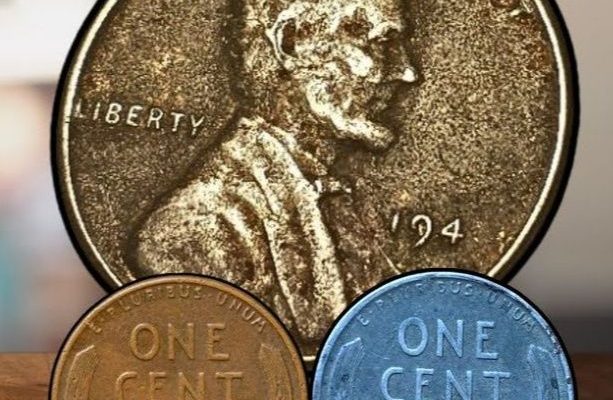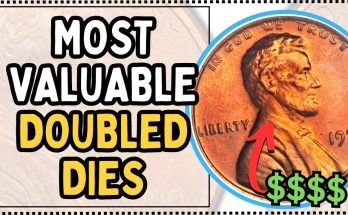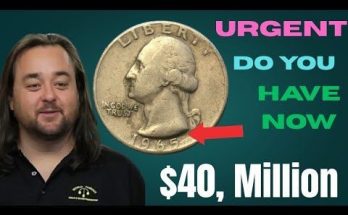Retire Instantly? The Hunt for the Million-Dollar Lincoln Penny
The headline is not an exaggeration. Tucked away in change jars, old coin collections, and forgotten attics across America could be a tiny piece of copper or steel worth a king’s ransom: the legendary rare Lincoln Cent. The captivating photo and accompanying caption, “RETIRE Instantly With These Rare Lincoln Pennies Worth Millions of Dollars!,” speak to the enduring allure of numismatics—the thrilling possibility that a life-changing fortune is hidden in plain sight. For a select few error coins, this dream is a reality, with verifiable auction records pushing well past the million-dollar mark.
The story begins with the humble Lincoln Wheat Penny, first minted in 1909 to commemorate the 100th anniversary of Abraham Lincoln’s birth. Designed by Victor David Brenner, the cent featured Lincoln’s profile on the obverse and two stalks of wheat on the reverse. Billions of these pennies were struck between 1909 and 1958, making them a common sight today. However, the handful that carry extraordinary value are not the common pieces; they are the few that were accidentally struck on the wrong metal, a fascinating byproduct of American history during the upheaval of World War II. These are the coins that collectors are willing to pay millions for.
The undisputed champion of Lincoln Cent rarity is the 1943 Copper Cent. Normally, pennies were composed of 95% copper, but in 1943, due to the critical need for copper and nickel in the war effort—specifically for ammunition shell casings—the U.S. Mint temporarily switched to a zinc-coated steel composition. This change created the distinctive, silver-colored “steel cent,” a common and historically significant coin today. However, due to a mix-up on the minting floor, a tiny handful of copper blanks, or “planchets,” from 1942 were left in the coin presses and accidentally struck with the 1943 date. These “off-metal” errors instantly became the stuff of legend. Only an estimated 20 to 30 genuine 1943 copper cents are known to exist across the three mints (Philadelphia, Denver, and San Francisco). Because of their extreme scarcity and the fascinating story of their creation, their value is astronomical. The auction record for a single 1943-D (Denver mint) copper penny stands at an astonishing $1.7 million, perfectly justifying the caption’s promise of instant retirement.
The coin’s opposite is an almost equally valuable error: the 1944 Steel Cent. In 1944, the Mint reversed course, transitioning back to a brass composition using recycled copper shell casings. But history repeated itself—this time in reverse. A few steel planchets left over from 1943 production runs were accidentally fed into the 1944 presses. The result is a silver-colored 1944 penny, a mistake that is nearly as rare as its 1943 copper counterpart. While the common 1944 penny is copper/brass, the ultra-rare 1944 steel cent can fetch hundreds of thousands of dollars. An authenticated 1944-S (San Francisco) steel cent, for example, has sold for over $400,000, with unconfirmed reports and collector estimates pushing high-grade examples close to the seven-figure mark.
So, how can you determine if that dusty old penny in your hand is one of the “million-dollar” mistakes? The key lies in simple, at-home tests:
- Check the Date: Only coins dated 1943 or 1944 have these specific wartime metal errors.
- The Magnet Test: The common 1943 penny is steel and is strongly magnetic. The million-dollar 1943 Copper Cent is not magnetic. Conversely, the common 1944 penny is copper/brass and is not magnetic. The rare 1944 Steel Cent is magnetic.
- The Weight Test: The common 1943 steel cent weighs grams. The rare 1943 copper cent weighs about grams. A small, accurate jeweler’s scale is a good tool for this.
The excitement is real, but a word of caution is paramount: counterfeits of both the 1943 copper and 1944 steel cents are extremely common. Often, a common 1948 or 1945 penny has had its date altered, or a common 1943 steel cent has been copper-plated. Finding a legitimate example is like finding a needle in a vast historical haystack, and any coin suspected of being one of these rarities must be authenticated and professionally graded by a recognized numismatic service like PCGS or NGC.
The thrill of the hunt, the connection to World War II history, and the staggering monetary reward make these rare Lincoln Pennies one of the greatest treasures still waiting to be found. The notion of a coin worth a million dollars—or more—remains a powerful motivator for anyone who looks twice at the loose change in their pocket.



